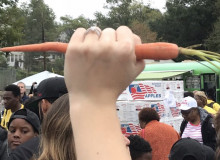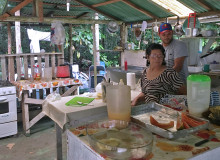Food
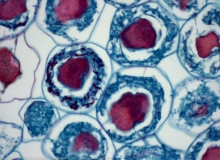
Arbuscular mycorrhizal fungi live in symbiosis with plant roots and are able to store up to 70 percent of organic carbon from leaf litter. (Mark Perkins/Flickr)
George Washington University
In many cases microbes are already helping the planet in underrated ways. Technological developments and advanced genetic engineering make microbiological innovation a major player in climate change mitigation.
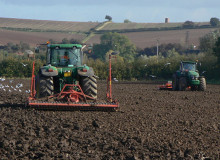
Tilling loosens soil to enable roots to sprout more easily, however it also exposes pockets of 'uneaten' carbon to hungry microbes. (Allan Murray-Rust/Wikimedia)
Northwestern - Medill
From breaking down escaping methane from melting ice caps to storing carbon in non-tilled soils, microbes are already mitigating climate change.
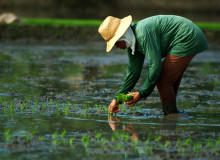
A farmer works to transplant rice. (International Rice Research Institute)
Eco-Business
A pioneering, crowdfunding platform is bringing individual investors and farmers together for a shared stake in Philippines' agriculture.
SUNY Environmental Science and Forestry
Anthropogenic climate change is currently influencing rainfall and temperature patterns in East Africa. Here's everything you need to know about how East Africans are confronting these challenges.
SUNY Environmental Science and Forestry
Farmers in East Africa are using bees to deter crop raiding elephants and increase food security in the area.
The George Washington University
D.C. organizations partnered to raise awareness about the food injustice that is happening in the nation’s capital with the D.C. Grocery Walk.
Planet Forward
Vimlendra Sharan, the UN-FAO's Director of the Liaison Office for North America, joined Frank Sesno at The George Washington University on Sept. 28, to talk about how we're going to feed an increasingly hungry planet — and how we tell that story.
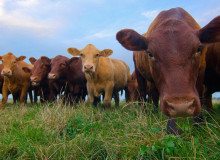
The UN-FAO reports 26% of the planet’s ice-free land is used for livestock grazing. (Ryan Thompson/U.S. Department of Agriculture)
State University College at Buffalo
It ain't pretty: Our food consumption habits are devastating the planet and contributing to world hunger. What can we do about it?
Arizona State University
Planet Forward led a student storytelling expedition to the Amazon. Read Sydney's story of how she found her sense of comunidade — “community” in Portuguese — as she turned every corner in Brazil.
Northwestern University
The USDA gets public input on its Native Bee Monitoring Plan.


